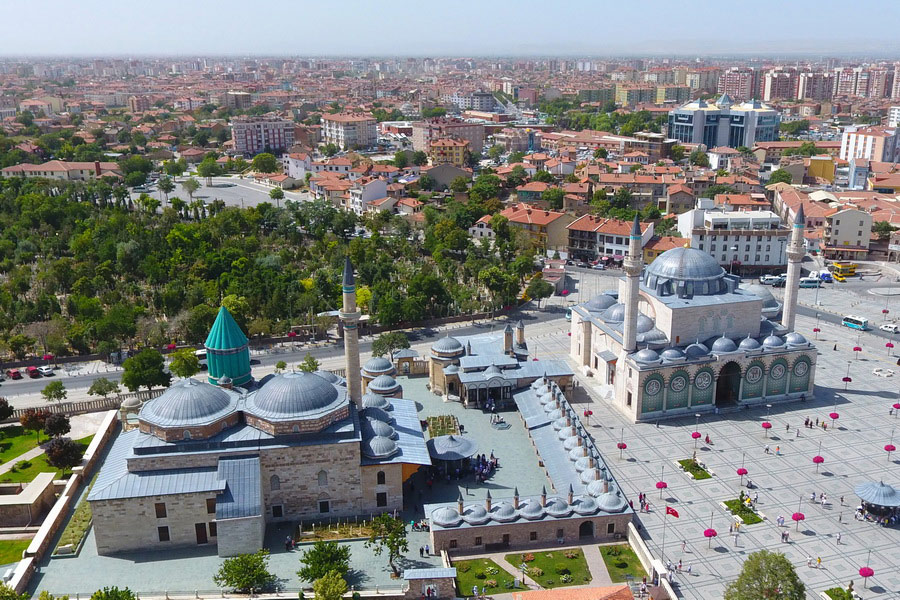Tours, Attractions, and Things to Do in Konya
Konya Travel Guide
Konya is the 7th most densely populated megapolis in Turkey (Türkiye), with a population of over 2 million. The city lies in the country’s southern Anatolian valleys.
Home to Rumi (Jalāl al-Dīn Muḥammad Rūmī), an illustrious Persian Sufi mystic and the founder of the Mevlevi Order in the 13th century, Konya reinforces its claim to being Turkey’s most religiously conservative city. The fascinating architecture reflects the prosperous past of the Sultanate of Rum.
Although Konya today is famous for its Muslim mosques and theological schools, it also holds significance in the Christian world. Among the things to do in Konya, Iconium (Konya), including the nearby Lystra (Gökyurt) and Derbe (Ekinözü), are sites in the New Testament worth exploring.
In the heart of Konya, visitors can learn traditional Turkish crafts like ebru and pottery. A popular place for tourists visiting Konya, Antalya, or Cappadocia is Tuz Gölü, also known as Salt Lake.
Konya Tours

One of the fascinating aspects of Konya is its ancient foundation, dating back to when inhabitants travelled on foot. This makes it a convenient city for walking tours of the main highlights. Besides, Konya is an affordable stop for travellers visiting Turkey. Many Konya tourist attractions have reasonable admission fees, and some are free to experience.
Best Time to Visit Konya
When it comes to the best time to visit Konya, summer in Konya can be increasingly hot and draining, while winter is cold. Yet it doesn’t stop tourists from visiting the Anatolian city at the beginning of the cold season. And for good reason. December 10-17 brings the Rumi Festival, which attracts over a million people from around the world. The spinning dance performed by men dressed in white robes is quite a spectacle.
For those not bothered by high temperatures, summer can be an excellent time to browse Konya’s curiosities. But be sure to bring water, wear sunscreen and a hat, and cover your skin. Nevertheless, the best time to visit Konya is spring and autumn, when the weather is perfect for sightseeing.
Whether seeking a guided tour or preferring to explore independently, this Konya travel guide will provide essential information to make your Konya tour enjoyable and memorable.
History of Konya
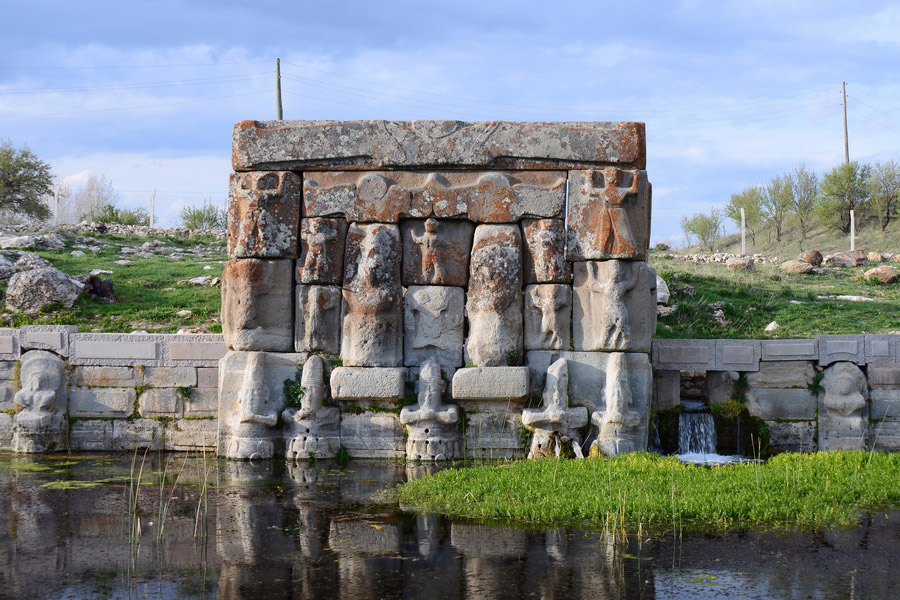
Konya boasts a rich history dating back to the 7th millennium BC, during the Stone and Bronze Ages. The Çatalhöyük Mound, within its borders, reveals evidence of an ancient settlement with well-preserved structures and artefacts.
Throughout history, Konya was influenced by the Hittites, Phrygians, Lydians, Achaemenids, and Alexander the Great. A visit to the Konya Archaeological Site offers glimpses of these eras through ancient city walls, temples, and bathhouses.
The 3,200-year-old Eflatunpınar Hittite Spring Sanctuary, located 85 km west of Konya, is a marvel of ancient engineering. Built to prevent floods, it stands as a testament to the ingenuity of its time.
In the classical period, Konya was known as Ikónion (Greek) and Iconium (Latin), even being mentioned in the Gospel. According to the Book of Acts, St. Paul and St. Barnabas preached here, and Iconium hosted one of the earliest Christian Ecumenical Councils in 235 AD.
Konya experienced Islamic influence through the Seljuk Turks, who made it their capital in 1076. The Seljuk Sultanate of Rum flourished during the 12th and 13th centuries, particularly under Sultan Alâeddin Keykubat, with advancements in arts, science, and architecture. Despite its strong fortifications, Konya fell to the Mongols, leading to the disintegration of the Sultanate into smaller beyliks (small principalities), one of which would eventually give rise to the Ottoman Empire.
Under Ottoman watch, Konya's architectural landscape transformed again. They erected beautiful mosques, madrasahs, and caravanserais that still leave sightseers in awe.
What to Do in Konya?
Landmarks and Attractions in Konya
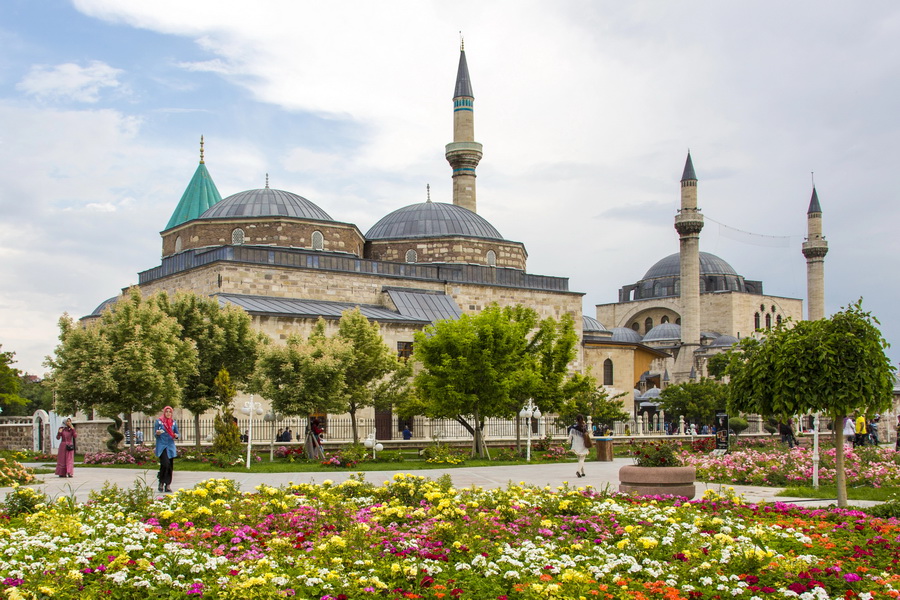
Every year, a myriad of visitors flock to Konya, a religious centre of Turkey, to admire its grand mosques, witness the whirling performance, and jump off for Lake Tuz, as highlighted in our Konya travel guide.
Soaring 163 metres into the sky, the Seljuk Tower (Selçuklu Kulesi) is a modern landmark in Konya with a breathtaking 30-degree city vista and its surrounding views. As the tallest building in Central Anatolia, it vaunts 42 floors and a remarkable panoramic restaurant.
The city's primary historic landmark is the Mevlana Museum (Mevlânâ Müzesi), the burial ground of the 13th-century Persian poet, Sufi mystic, and Islamic scholar widely known as Rumi. His tomb is delicately decorated with Arabic calligraphy and tile work. The main event, the Sema ceremony at the Konya Mevlana Cultural Centre (Mevlânâ Kültür Merkezi), emphasises the whirling dervishes.
Nearby is the 16th-century Selimiye Mosque (Selimiye Camii), designed by the Grand Architect Mimar Sinan, with an interior that invites contemplation.
Another Konya destination that should undoubtedly be on the Turkey travel list is the historic greyish-blue-tiled mosque, Alâeddin Mosque (Alâeddin Camii), with a mausoleum of eight Seljuk Sultans of Rum. This marvel of Anatolian Seljuk architecture is perched on the top of Alâeddin Hill – a peaceful park today to stroll through and cherish nature.
Karatay Madrasah (Karatay Medresesi), just across from the Alâeddin Mosque, will amaze architecture buffs with the stone-carved entrance and tiled work inside the madrasah topped by an impressive dome, displaying an intricate interior decoration.
The 16th-century Aziziye Mosque (Aziziye Camii) in Konya exemplifies the beauty of Ottoman art, demonstrated in decorative calligraphy, ceramic tiles, and atypical Baroque-style windows.
Sille, 30 minutes from Alâeddin Hills, showcases 800 years of peaceful coexistence between Greek Christians and Muslims, with stone houses, cave churches, and the Hagia Eleni Church (Aya Elenia Kilisesi).
Rumi's bond with his mentor Shams Tabrizi (Şems-i Tebrîzî) inspired his poetry after Shams' disappearance. Shams' tomb, near Alâeddin Hill, is a popular Konya landmark, reflecting their deep, transformative connection.
Konya Museums
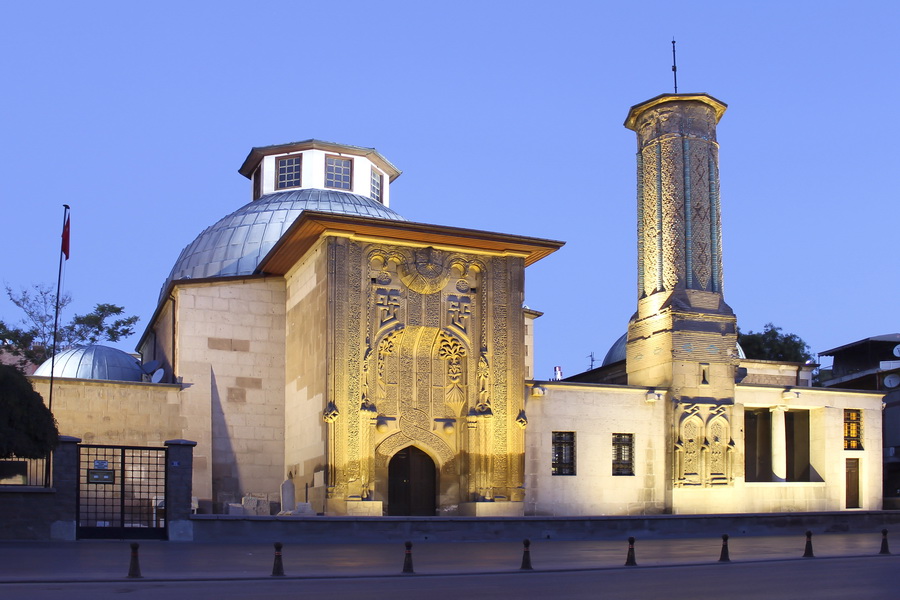
As the former capital of the Seljuks during the 12th and 13th centuries, the Konya tourist attractions, such as mosques, madrasahs, and tombs, are genuine examples of the Seljuk artistic world. Museums of the Mevlana Mausoleum, Karatay Madrasah, and Sille reveal the lasting imprint of Anatolian Seljuks. But beyond that, are there more Konya museums that are worth a visit? The answer is “Yes.” Here’s a Konya travel guide to a few more to consider.
Founded in 1901, the Konya Archaeological Museum (Konya Arkeoloji Müzesi) is among the bestmuseums in Turkey. Artefacts going as far back as 6,000 years include ceramics, stone and bronze ware, inscriptions, ornaments, and a Byzantine artefact. Likewise, it contains objects from ancient Phrygia, the Hellenistic period, and a stunning, hard-to-miss Roman sarcophagus from 250-260 AD, depicting the labours of Hercules.
A visit to the Konya Ethnography Museum (Konya Etnografya Müzesi) is an excellent way of learning about the everyday culture and traditions of the Konya region. The museum encompasses hundreds of pieces of anthropological value, such as carpets, women’s traditional wear, kitchen tools, Ottoman writing tools, weapons, early Konya newspapers, and more.
A 13th-century Ince Minaret Madrasah (İnce Minareli Medrese) houses a fascinating Museum of Stone and Wood Art. The museum unfolds an array of artistry, showcasing stone, marble, and wood carvings that hark back to the Seljuk and the Karamanids periods. Stone engraving techniques take centre stage alongside intricated wood carvings that adorn doors and window frames with geometric and plant motifs. Marble tombstones and storage chests captivate the eye with their unique design. Two works of art stand out: a double-headed eagle, symbolising the Seljuk capital Konya, and a second work - an angel with wings.
Konya Theatres
Turkish theatre traditions are deeply intertwined with the country’s rich history. The oldest form, shadow theatre (Karagöz), dates to the 14th century and continues to captivate local and international audiences. Since the 19th century, Western theatrical traditions have also taken root in Turkey.
Konya has approximately seven drama theatres, the oldest being Konya Devlet Tiyatrosu. The building, originally constructed as the People's House in 1946, has served various purposes, including a cinema and a library. It wasn’t until 1996 that the theatre opened its doors here, and today, it offers visitors a diverse range of plays.
Besides state and municipal theatres, Turkey also boasts private theatres. Notable among them is Sahnerengi Tiyatro, located opposite the Culture Park. Its actors regularly perform and also host drama clubs for those eager to learn the art of acting. Many aspiring trainees from these clubs appear in TV series and films produced in Konya and its surroundings.
The first private theatre in Turkey, Düşişleri Tiyatrosu, was established in 2012. Konya is also home to other performing arts centres, such as Sanrı Yapim and Konya Şehir Tiyatrosu, all of which share a commitment to innovating the theatre scene as the new generation introduces fresh styles and approaches to the art.
Entertainment, Parks, and Shopping in Konya
Entertainment
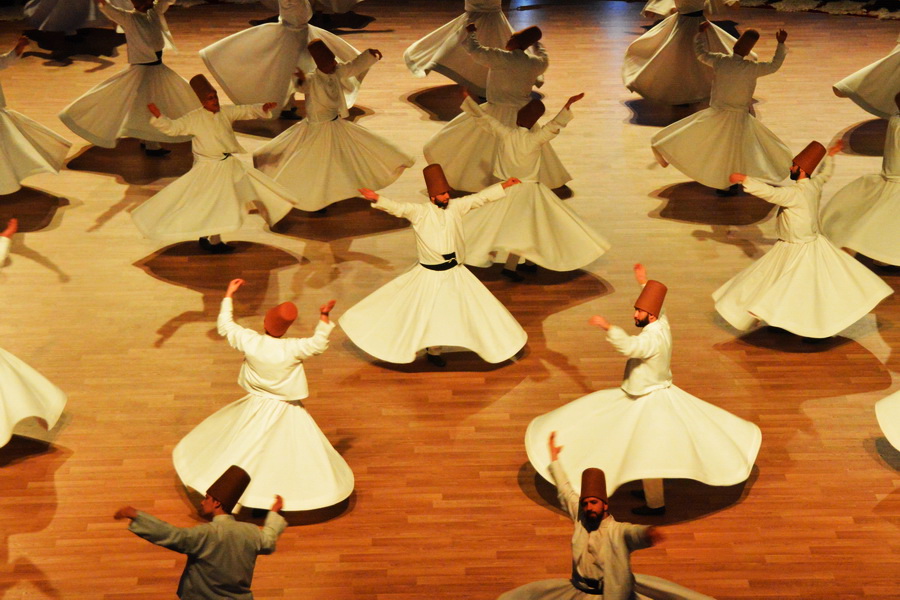
Konya is famous as a city of whirling dervishes. Even if you have seen it in Istanbul, Konya is where this Sufi tradition of spinning dance was born. Here, visitors have an exclusive chance to witness a religious ceremony called “Sema." The performers are not just artists but devoted members of the Mevlevi Order, who have kept this tradition for over 700 years.
The performance (Mevlana Semazen Gösterileri) is held at the Mevlana Cultural Centre, a 15-minute walk from the Mevlana Museum, every Saturday at 7 PM.
Most cities take on a whole new character at night, and Konya is no exception. Walking across the square in the early evening allows sightseers to get photos of the Selimiye Mosque and Mevlana Museum lit up against the dusk sky. Outdoor cafes and restaurants across the road are great inns to sit down and appreciate the view of minarets. Locals love evening strolls at the Alâeddin Tepesi garden due to the brightly coloured city vista.
Unlike Istanbul, Ankara, or Izmir, Konya doesn’t have a vibrant nightlife. It is mainly a destination of religious pilgrimage for many Muslims. Despite this, Konya has a handful of entertainment spots for those looking for things to do in Konya at night, like the Dedeman Hotel Roof Bar, Club Inferno, John Coffey Bistro, and Haraba Cafe.
Who doesn’t love hands-on experience when it comes to science? Packed with exhibits like Our Body, Our World, The Universe, New Horizons, and Basic Steps, the Konya Science Centre (Konya Bilim Merkezi) presents interactive activities that appeal to younger and older science lovers alike.
An astonishing spectacle of life-size roaring and moving dinosaurs, miniature replicas of iconic Turkish and Islamic architectural landmarks, and beloved cartoon characters turned into sculptures await children at Around the World in 80 Thousand Park. In contrast to Dinopark in Antalya, this wonderful recreational area is a wealth of greenery.
Parks of Konya
The city of Konya is filled with several natural havens. For those looking for things to do in Konya, here are the best spots to explore.
The butterfly garden is a paradise for nature lovers. Hanging from the traveller’s palm, resting on the lotus, or the white fragrant coral swirl, guests will catch sight of butterflies all over the Konya Tropical Butterfly Garden (Konya Tropikal Kelebek Bahçesi). This garden is home to 6,000 butterflies of 14 species.
One of the highly liked public parks in the heart of Konya, Alâeddin Hill Cultural Park (Kultur Park Alâeddin Tepesi), provides the city’s panoramic views. Furthermore, it includes the water reservoir built in 1908, tea gardens, flower fields, a fountain pool, and the Unknown Soldier Monument. It’s a lovely location to picnic and escape the busy streets.
It seems that the Japanese park was possible anywhere but in Konya. Yet surprisingly, the Kyoto Japanese Garden (Kyoto Japon Parkı) atop Alâeddin Hill is an unusual green oasis built in 2010 to honour relations between Konya and its “sister” city of Kyoto. The park is an excellent display of Japanese aesthetics – ponds, a lake with goldfishes, gazebos, lanterns, walking paths, wooden bridges, and a Japanese-style café.
For sports enthusiasts, the 161,900 square metres Karatay Olympic Park (Olimpiyat Parkı) is the central place to enjoy various activities. Whether you want to jog through its green landscape or spend time with the family – the Olympic Park caters to numerous possibilities.
Any dam is a marvel of engineering. The Sille Dam Park (Sille Baraj Parkı) is a vivid example of that achievement. The dam, built between 1953 and 1960, irrigates around 260 hectares, becoming a magnet for local and international tourists alike. The park infrastructure covers walking trails, picnic spaces, children’s playgrounds, campgrounds, a tea garden, boat cruising, and a restaurant.
Shopping in Konya

When visiting the city, many wonder, “What to buy from Konya?”. Known for its rich cultural heritage, Konya offers various traditional goods, from carpets to handmade ceramics and delicacies like local sweets.
The historical Bedesten Bazaar (Bedesten Çarşı) in Konya has been a trading centre for nearly 2,000 years. It’s an amazing labyrinth with twists and turns that seem to get you into another world. Here, foreign visitors are exposed to shops selling traditional clothing, shoes, handicrafts, antiques, perfumes, and more. It also hosts restaurants, cafes, food shops, vegetable and fruit stalls, and spice and sweet shops. The historical Kapu and Aziziye mosques are part of the unique sights of the Konya bazaar.
Next to the Bedesten Bazaar is the women's bazaar (the Kadınlar Pazarı), where female villagers used to sell handmade and homegrown goods. Established in the 1940s, it evolved into an area where male and female vendors sell fresh produce from local farms.
Are you looking for a place to buy a handmade carpet in Konya? The high-quality Uşak or Kilim rugs can be found at the Kilimji Baba Rugs, Carpets, Kilims. The friendly vendors are always happy to tell you the history and significance of each carpet.
Konya has no lack of modern city malls with mouth-watering food scenes and popcorn-scented cinemas. Amidst the prominent malls is the Kule Site Shopping Centre (Kule Site Alışveriş Merkezi), adjacent to the Seljuk Tower. The mall has diverse eateries on the ground floor and a viewing platform on the 42nd floor. Another notable shopping centre is the Konya Kentplaza Alisveris (Konya Kentplaza Alışveriş ve Yaşam Merkezi). Children can enjoy a playing centre there, while food courts accommodate various dining options. Taxi points across the mall make transportation a breeze. For another modern shopping experience, travellers may consider the Novaland Outlet Konya AVM (Novaland Outlet Alışveriş Merkezi).
Food in Konya
Turkish Cuisine
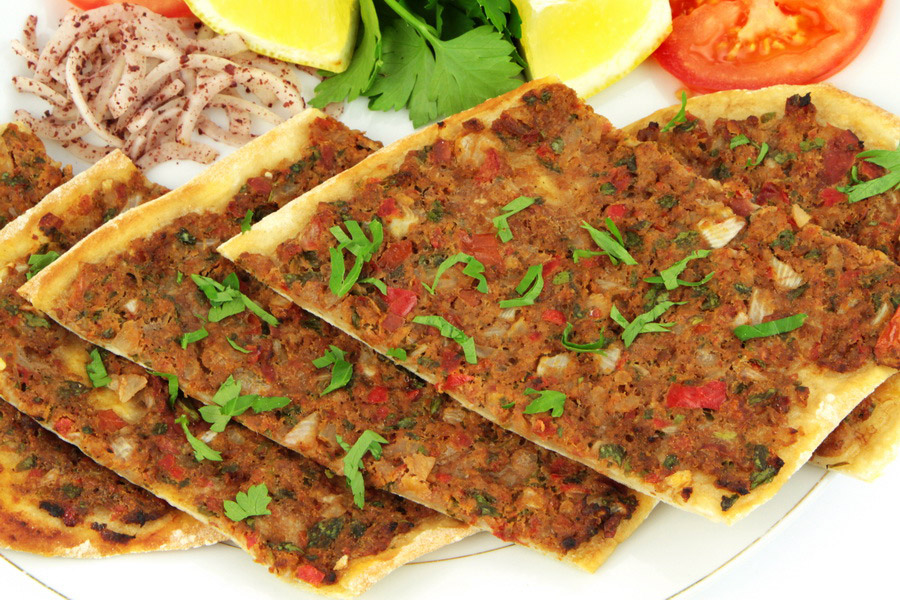
As foreign holiday makers explore the charming eateries of Konya, they will find some of Konya’s exquisite dishes, including from the Ottoman, Seljuk, and even Mevlevi cuisine. From crispy meat bread favourites like etli ekmek and tirit to sweet and savoury mutancana and hearty Okra soup, every bite is an explosion of flavours.
Etli ekmek is truly a traditional dish of Konya because the recipe originated in this city. This pizza-like dish involves the elongated shape of pide (Turkish flatbread) and topping comprising minced meat and sliced onion, tomato, and pepper. The best etli ekmek with ayran are served at the Celalbey Etliekmek Sube 2 1985.
One unusual and unique Central Anatolia dish is Konya tiridi – a type of tirit, sometimes found in the cuisine of Mecca, made from stale bread dipped in broth with meat chunks or minced meat.
Soup (çorba) connoisseurs cannot resist the temptation of Konya’s historic soup cooked with okra, meat, and vegetables. It’s often on the menu at holidays, weddings, and other special occasions.
And what about a soup with spiritual meaning? Tutmac soup (tutmaç soup) is mentioned in Mevlana’s work along with Kalye and Tarhana Soups. Meat and vegetables stand for soil, while flour symbolises fire.
Picky eaters may find it difficult to try new dishes. But someone said: “When in doubt, eat kebabs!” Kebab varieties in Turkey differ according to region, and in Konya, the extremely popular one is the tandoori kebab. Unlike recipes on the Internet, in Konya, you will be served lamb meat cooked in a copper pot for 8-10 hours.
A very rich and energising dish of the Ottoman palace cuisine is mutancana (lamb stew), made with lamb meat and dried fruits – figs, apricots, raisins, red plums, and almonds.
Vegetarian Restaurants
Finding vegetarian and vegan food in Konya is not a challenge. Despite its cultural and historical context that led the population to rely on meat and dairy products in their daily diet, the city has an appealing repertoire of meat-free options to satisfy vegan and vegetarian tastes.
- Cesmi Nigar Soup (Çeşm-i nigar Çorbası). The soup brings together cornmeal, lentils, garlic, onion, and spices.
- Spinach Borani. A perfect blend of spinach, olive oil, yoghurt, and spices.
- Aubergines and Pepper Sıkma (Warp). Smoky aubergines in fried lavash with paprika and herbs.
- Patatesli Sikma (Wrap). Boiled and crushed potatoes rolled in a fried lavash.
- Bulgur with Saffron and Almonds. A delightful mix of bulgur with almonds and vegetable oil, where turmeric adds to the dish's earthiness and saffron brings the floral flavour.
- Aubergines/pepper/bean Kalye. Dried vegetables mixed with vegetable oil and spices.
- Beetroot meal. This light dish with Turkish yoghurt has a tangy flavour thanks to the presence of spices.
- Haydari with Walnut. Here, roasted aubergines, meat, walnuts, garlic, dill, spices, and olive oil are blended in yoghurt.
Coffee Houses, Bakeries, and Patisseries
Höşmerim is arguably the most well-known Konya dessert, a staple on many menus in the region. Its popularity is attributed to simplicity – a creamy texture made from milk, fresh cheese, eggs, semolina, sugar, and flour. It’s commonly topped with honey and nuts.
One cannot visit a Konya bakery without trying at least saçarası. It consists of layers of phyllo dough filled with sherbet, cream, pistachios, and syrup.
For halva fans, the Konya version of hemp halva is a must-taste, infused with roasted hemp seeds, almonds, walnuts, and pistachios and poured with hot grape molasses over them. It is said to derive from the Seljuk period.
Other sweets are molasses dessert, uyutma, roasted apricot, and haside dessert. Finally, even if you don’t have a sweet tooth, Mevlana candies, made from sugar, water, and lemon salt, are a must-buy souvenir from Konya’s many stores.
City Transport in Konya
Public Transport
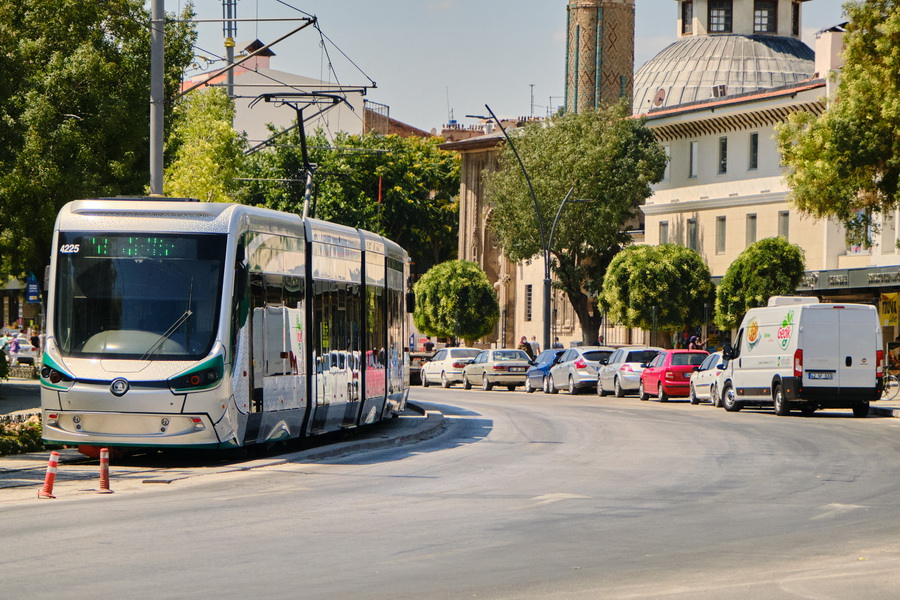
The proximity of the main Konya tourist attractions in the old town allows for walking just about everywhere. Additionally, there are many affordable public bus lines, including the minibus service (Dolmuş).
Trams
The Konya tram deserves special attention. Many prefer riding a tram for excursions. Two lines connect tourists to emblematic monuments like the Mevlana Mosque and others. There’s no need to buy a KonyaKart because the fare can be paid by Visa or Mastercard at the tram or bus turnstiles. The KonyaKart might be cheaper for those planning to ride public transport a lot.
Taxis
Consider taking advantage of a taxi service to save time when reaching your destination via transfers. The easiest way to book a cab is via Talixo’s website or app. However, many taxis can be hailed from the street.
Regular taxis (Sari Taksi), sometimes without air conditioning, are yellow and indicate economy class. Comfort class taxis, or Turkuaz, are blue, while Siyah or VIP cars are black, indicating a higher level of comfort. It’s important to note that fares for these higher-end vehicles are typically more expensive.
Car Rental
Tourists planning to spend most of their time in Konya and the surrounding areas don’t need a car. In fact, driving and parking in the city can be challenging due to traffic regulations, which are often treated more as suggestions. However, those venturing outside of Konya may want to stay in the comfort of their own vehicle.
The best option is to book a car rental online in advance through Internet sites like Kayak. For those who prefer booking through local agencies, Özdemir Rent A Car and Paytar Oto Kiralama are reliable options.
Major car rental companies, such as Europcar and Avis, also have desks at Konya Airport and in the city centre.
Other Modes of Transport
Konya has introduced more and more cycling lanes and bike-only routes to make it fun to cycle around the city. The bicycle path network has reached 550 km, with rental stations spanning 80 points throughout Konya. With the AAR bike share app (Anadolu Açıkhava Reklamcılık), cycling in Konya can be an adventurous activity.
How to Get to Konya?
Travelling from Istanbul and Europe to Konya covers multiple transportation options, including planes, buses, and cars.
For those preferring air travel, Turkish Airlines, Pegasus Airlines, and AnadoluJet provide convenient flights from Istanbul with a duration of approximately 1 hour and 10 minutes. Ticket prices vary based on the season and departure time, ranging from 550 to 1100 Turkish lira (including luggage). Domestic airlines land at Konya Airport (KYA/LTAN) in Selcuklu (Selçuklu). You can get to the city downtown from the airport by Havas shuttles, cabs, or a rented car.
Arriving in Konya by overnight train is a straightforward option for those travelling from Istanbul or Adana. A few high-speed and modern trains operating from Istanbul, with a transfer at Eskişehir, will get you to the city in 4 and a half hours. The direct train from Ankara to Konya will get travellers to their station in less than 2 hours.
For a more budget-friendly option, consider taking a bus or a coach. Ticket prices start from 500 Turkish lira, and the journey usually lasts 10 to 11 hours, depending on the carrier and route. The travelling time from Ankara is only 3 hours.
Konya is an excellent destination for a day trip from Istanbul. It allows guests to explore Istanbul’s iconic landmarks and other historically significant and fascinating sights in Turkey.
The most cost-effective way to travel from Konya to Cappadocia is by bus. The journey takes about 5 hours. For those seeking a more direct and quicker option, some hotels in Konya offer taxi services to a Göreme hotel. The service takes approximately 3 hours and 10 minutes but comes at a higher cost compared to the bus. Another alternative is to fly from Konya Airport to one of the airports in Cappadocia.
Languages Spoken in Konya
The predominant and official language in Konya is Turkish, spoken by the majority of the population. While English is not generally spoken here like in Istanbul, the best hotels offer a comfortable environment for seamless communication with the staff. Nevertheless, having a translation app on your mobile phone is highly recommended to facilitate interactions with locals, particularly when navigating Konya bazaars for shopping.
Currency in Konya

The currency in Konya is the Turkish lira. When buying currency for Turkey, select the currency code TRL. You will also see a symbol ₺ on price stickers.
In Konya, chain shops at shopping departments or malls, as well as hotels, are likely to accept card payments. Yet smaller family-run businesses and bazaar vendors may prefer cash. Therefore, carrying both is a smart decision.
ATMs, called Bankamatik, can be found at bank branches, airports, shopping centres, train stations, central areas, and tourist spots. However, there are fewer of them in remote villages outside Konya.
Avoid exchanging currency at Konya Airport (KYA) due to higher exchange rates applied.
Security in Konya
While Konya is generally regarded as a secure destination for travellers, with a relatively low crime rate, it’s crucial to exercise caution and adopt common-sense safety measures. That is, avoid leaving belongings unattended, backpacks open, and wandering in remote streets alone.
Foreigners must follow basic rules so as not to trigger discontent among residents or unwanted attention. For example, they should dress modestly, especially when visiting sacred Muslim sites.
Although there is no prohibition on alcohol in bars and nightclubs, since Konya is a conservative city, it is recommended to avoid drinking alcohol in public venues. In addition, locals may feel offended by travellers who abuse alcohol. The Konya residents are very good-natured and hospitable; however, as a guest in another country, it is important to respect the local traditions and customs.
It is also advisable to avoid arguments on political topics and not to criticise anything Turkish.
Pedestrians need to be mindful of traffic, as it can be very hectic with drivers not always adhering to traffic rules. Therefore, when crossing at a designated pedestrian crossing, it’s crucial to make sure the driver slows down and comes to a stop before proceeding.
Finally, drinking water from the tap in Konya is not recommended for foreign visitors.


